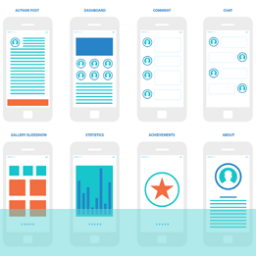
Human error and UX design
Being human, users will always make errors. (Actually, machines make them too but we won’t go into that here!) Every conceivable human error cannot be catered for and there will be some just too bizarre to ever anticipate and remedy. But there are certain types of error that can be predicted and, to some extent, designed for, to ensure the user experience isn’t compromised too much by their occurrence.
It is mainly the case that friction in a process (i.e. anything that delays and frustrates the user in moving onto their goal) is considered undesirable and should be eliminated. But, in the case where there is likely to have been human error it can be an actual benefit to have friction. To give an example, if you are constantly getting errors in input to online forms or misunderstandings of what information is required in fields, reviewing the form to slow people down to increase accuracy might be an option.
Similarly, if there is evidence that users are continually trying to click on unclickable items or trying to navigate through non-responsive items the way these are presented might need rethinking. As a designer you might look at a layout and think it is clear and obvious but usability testing will throw up what might be fairly frequent mistake scenarios.
Managing errors through UX design
Even more serious situations arise when users make what might be fatal errors (or very difficult to undo at least). For example, deleting an entire file, operation might be irreversible. Inserting a warning between the user action and the deletion can help the user to determine what they are doing and avoid making a big mistake.
Some email systems have the ability to recall an email in a short space of time after sending (but you have to be quick – it is literally only seconds to reconsider). Some will point out that you have referred to attachments in the body text but not attached anything or that you have failed to include a subject heading. These UX design techniques help to avoid glitches in the user experience by anticipating them in advance and providing user friendnly solutions.
There are also issues around security and clear intention that often require friction to be applied to ensure that the users’ interests are protected. If a password change is being asked for you might well have to input the current password and respond to a phone message or text to confirm. Similarly, if you are about to make a purchase there might well be two-step confirmation, or other external verification, to make sure you wish to commit to the expenditure (and, of course that it is actually you making the buy). These might slow the process down but they are intended to make sure the right decision is made for and by the user.
Prototyping with real data rather than fictional information can also throw up problems that might not have been anticipated (for example longer names or user names, unexpected location issues – even problems identifying gender and occupations. Real data might suggest some areas for consideration that you hadn’t really thought about. It is also important to establish the right scenario for participants so that true behaviour can be observed.
If you would like to know more about UX design for preventing user error, call us on +44(0)800 024624 or email us at hello@ux247.com.

















[…] References :https://uxdesign.cc/design-for-unanticipated-user-behaviours-2aef6871c1chttps://www.nngroup.com/articles/slips/https://www.nngroup.com/articles/user-mistakes/https://measuringu.com/errors-ux/https://ux247.com/ux-design-for-unanticipated-behaviour/ […]
[…] https://uxdesign.cc/design-for-unanticipated-user-behaviours-2aef6871c1c https://www.nngroup.com/articles/slips/ https://www.nngroup.com/articles/user-mistakes/ https://measuringu.com/errors-ux/ https://ux247.com/ux-design-for-unanticipated-behaviour/ […]